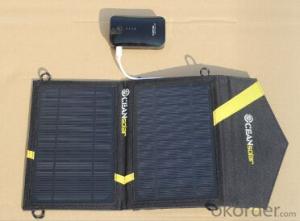So, you’ve decided to take the leap and install solar panels on your home. That’s a fantastic decision! Not only will you be saving money on your energy bills, but you’ll also be doing your part to help the environment. But where do you start? Don’t worry, we’ve got you covered with this step-by-step installation guide. We’ll break down the process into manageable chunks, making it easy for you to understand and follow along.
Why Residential Solar Panels?
Before we dive into the installation process, let’s talk about why residential solar panels are such a great choice. Solar energy is a renewable resource, meaning it won’t run out like fossil fuels. By harnessing the power of the sun, you can generate clean, sustainable energy for your home. Plus, solar panels can significantly reduce your carbon footprint, which is a win for both you and the planet.
Assessing Your Home’s Suitability
The first step in the installation process is to assess your home’s suitability for solar panels. This involves looking at a few key factors:
– Roof Type and Condition: You’ll need a roof that’s in good condition and can support the weight of the panels.
– Sunlight Exposure: Your home should receive a decent amount of sunlight throughout the year.
– Shading: Check for any shading from trees or buildings that could affect the panels’ efficiency.
Choosing the Right Solar Panels
Once you’ve determined that your home is a good fit for solar panels, it’s time to choose the right ones. There are a variety of options available, each with its own benefits and drawbacks. Consider factors such as:
– Efficiency: Look for panels with high efficiency ratings to maximize energy production.
– Cost: Solar panels can be a significant investment, so consider your budget when making a decision.
– Warranty: A good warranty can provide peace of mind and protect your investment.
Designing the System
With the right panels in mind, it’s time to design your solar system. This involves determining the size of the system, the number of panels, and their layout. A professional can help you with this, but here are some things to keep in mind:
– Energy Needs: Consider your household’s energy consumption to determine the size of the system you’ll need.
– Panel Orientation: The direction your panels face can affect their efficiency. Generally, south-facing panels are the most efficient in the Northern Hemisphere.
– Inverter Placement: The inverter is what converts the DC power from the panels to AC power for your home. Make sure it’s placed in a location that’s easily accessible for maintenance.
Permits and Paperwork
Before you can start installing your solar panels, you’ll need to secure the necessary permits and complete any required paperwork. This can vary depending on your location, but generally includes:
– Building Permits: Required for most installations.
– Electrical Permits: Needed to ensure the system is installed safely and up to code.
– Utility Company Approval: Some utility companies require approval before you can connect your solar system to the grid.
Hiring a Professional Installer
While it’s possible to install solar panels yourself, it’s highly recommended to hire a professional. They have the expertise and experience to ensure the job is done safely and correctly. When choosing an installer, consider:
– Experience: Look for installers with a proven track record.
– Certifications: Make sure they have the necessary certifications for your area.
– Reviews: Check online reviews to see what past customers have to say about their experience.
Installation Process
The actual installation process can vary depending on the size and complexity of your system, but generally involves the following steps:
– Site Preparation: This includes clearing the area where the panels will be installed and preparing the roof.
– Racking System Installation: The racking system is what holds the panels in place on your roof.
– Panel Installation: Once the racking is in place, the panels are mounted onto it.
– Inverter and Electrical Installation: The inverter and any necessary electrical components are installed.
– System Testing: Before the system is connected to the grid, it’s tested to ensure everything is working properly.
Connecting to the Grid
After your system has been installed and tested, the final step is to connect it to the grid. This typically involves:
– Utility Company Inspection: They’ll inspect the system to ensure it meets their requirements.
– Net Metering Agreement: If you plan to sell excess energy back to the grid, you’ll need to set up a net metering agreement with your utility company.
– Final Approval: Once everything is approved, your system is connected to the grid and you can start generating your own electricity!
Maintenance and Monitoring
With your solar panels installed and connected, it’s important to keep up with regular maintenance and monitoring to ensure they continue to operate efficiently. This includes:
– Cleaning the Panels: Regularly cleaning your panels can help maintain their efficiency.
– Monitoring System Performance: Many solar systems come with monitoring software that allows you to track your energy production.
– Inspecting for Damage: Keep an eye out for any damage to the panels or racking system and address it promptly.
Wrapping Up
Installing residential solar panels is a big project, but it’s an investment that can pay off in both cost savings and environmental benefits. By following this step-by-step guide, you’ll be well on your way to enjoying the benefits of solar energy at home. Remember, if you’re ever unsure about any part of the process, don’t hesitate to consult with a professional. They’re there to help you every step of the way.
So, there you have it—a comprehensive guide to installing solar panels on your home. It’s an exciting journey, and we hope this has made it a little less daunting. Embrace the sun’s power and watch your energy bills shrink while your contribution to a greener world grows!

